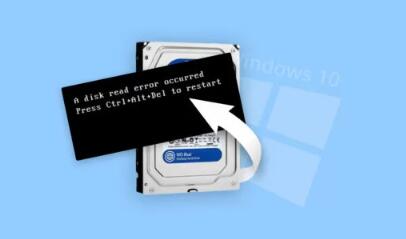Smart Hard Disk Error 301 is a common issue encountered on HP laptops and desktops that use the SMART (Self-Monitoring, Analysis, and Reporting Technology) system. This error typically appears when the system detects an imminent hard drive failure, alerting the user to take necessary actions to prevent data loss.
Causes of Smart Hard Disk Error 301
The error can occur due to multiple reasons, including:
Physical damage – If the hard drive has suffered mechanical damage, it may fail SMART checks.

Bad sectors – Accumulation of bad sectors can cause data corruption and trigger the error.
Firmware corruption – Corrupted firmware can lead to inaccurate SMART status reports.
Power surges – Sudden power loss or fluctuations can cause damage to the hard drive.
Overheating – Excessive heat can degrade hard drive components over time.
Virus or malware – Certain malware can damage file system integrity and impact drive performance.
How to Fix Smart Hard Disk Error 301
1. Restart Your Computer
Sometimes, the error can be a false alarm caused by a temporary glitch. Restart your computer and check if the error persists.
2. Check Hard Drive Connection
Loose or improperly connected SATA cables can sometimes cause the error. If possible, reseat the hard drive by disconnecting and reconnecting it.
3. Run Hard Drive Diagnostics
Most HP laptops and desktops come with built-in diagnostic tools to check hard drive health.
Restart the computer and press Esc or F2 to enter the HP diagnostic menu.
Select Hard Drive Test and follow the on-screen instructions.
If the test fails, consider replacing the hard drive.
4. Use Windows CHKDSK Tool
The CHKDSK command can help detect and fix bad sectors on your hard drive.
Open Command Prompt (Admin) by right-clicking on the Start menu.
Type chkdsk /f /r C: and press Enter.
Restart the computer and let the scan complete.
5. Update Firmware and Drivers
Outdated hard drive firmware or drivers may contribute to the issue. To update:
Go to the Device Manager (Press Win + X > Device Manager).
Expand Disk Drives, right-click on the affected drive, and select Update driver.
Also, visit the manufacturer’s website to check for firmware updates.
6. Check for Overheating
If your laptop or desktop is overheating, it may cause hard drive errors. Use cooling pads and ensure proper ventilation.
7. Scan for Malware
Malware infections can damage disk sectors. Run a full system scan using a reliable antivirus program.
8. Recover Your Data
If the error persists and your drive is accessible, back up your data immediately.
Use an external hard drive or cloud storage.
You can use third-party tools like Panda Data Recovery to retrieve important files before replacing the drive.
9. Replace the Hard Drive
If none of the above solutions work, the hard drive may be failing. Replace it with a new HDD or SSD and reinstall Windows.
Preventive Measures
Regular Backups: Always keep an updated backup of important files.
Monitor SMART Status: Use tools like CrystalDiskInfo to keep track of drive health.
Use a Surge Protector: Protect your system from power surges.
Keep Your System Cool: Ensure proper ventilation and clean dust from cooling fans.
Avoid Shocks and Drops: Handle your laptop with care to prevent mechanical damage.
About us and this blog
Panda Assistant is built on the latest data recovery algorithms, ensuring that no file is too damaged, too lost, or too corrupted to be recovered.
Request a free quote
We believe that data recovery shouldn’t be a daunting task. That’s why we’ve designed Panda Assistant to be as easy to use as it is powerful. With a few clicks, you can initiate a scan, preview recoverable files, and restore your data all within a matter of minutes.
Subscribe to our newsletter!
More from our blog
See all postsRecent Posts
- Recovery ssd upgrade failed exagrid error 2025-04-03
- Smart hard disk error 301 2025-04-03
- Error code 36 external hard drive 2025-04-03










